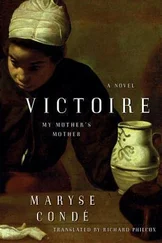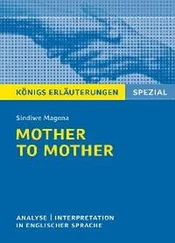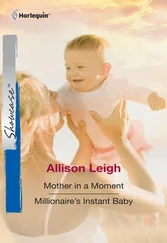“The hormones are rough,” said Tessa. To prepare for their transfers, the Cohort had been on a regimen of hormone injections. “But hang in there, Gwen. You only have a few hours to go.”
“You sure we can’t take the supplement now ?”
“You probably could,” said Tessa. Part of the Seahorse Solution was NauseAway, a supplement that eradicated “morning sickness” and maintained energy levels throughout pregnancy. “But it hasn’t been tested exhaustively at the pre-procedure state yet. We know after an embryo transfer is successful, the supplement is completely safe. Your transfers are happening in”—Tessa glanced at the clock on the wall—“four and a half hours. Then you can take the supplement.”
Gwen rested her head against the white leather of the couch and covered her eyes with one arm. “Just wake me when I’m pregnant, okay?”
“I’m starving,” said Kate. “I think it’s the hormones. I’ve never cared so much about breakfast.”
“I never cared about breakfast until yesterday,” said LaTonya, “when I had an almond croissant in the dining room here. It’s like God in a pastry form.”
“Oh, good,” said Tessa. “They’re made by a friend of my husband’s.”
“When does Dreamy Pete get to visit?” said Kate.
Tessa shrugged. “We haven’t planned anything yet. No visitors at all until you three are settled in.” She kept her tone casual, almost dismissive, though it made her feel guilty, as if Peter could hear her. In truth, she missed him already. But none of the Cohort had a husband or significant other; this was a requirement of their participation. Their harvested eggs were already prefertilized with the sperm of anonymous, well-screened donors. They’d also been enhanced with cells derived from the skin samples of natural AG mothers, to jump-start fetal growth. The Cohort’s pregnancies were manipulated, coaxed, and designed in a lab. It was incredible, but it was not romantic.
Eventually, of course, Tessa and Luke envisioned the Seahorse Solution as a decision a couple made together, as an enlightened team. But for now, allowing another person’s opinions and emotions into the mix was too risky. To linger on any details of Tessa’s own marriage, even those as minor as Peter’s visiting schedule, would remind the Cohort of what they did not have: partners. It risked making them feel more alone.
“Doesn’t it bother him?” Gwen said, as if reading Tessa’s mind. “That you’ve ditched him for us?”
“No,” said Tessa. “He understands the importance of our work here. He believes in it as much as we do.” She wished this were true.
“Peter’s basically perfect,” said Kate. “He’s like a Ken doll, hiker edition.”
“Can he be my donor?” said LaTonya. “Is it too late?”
“Very funny,” said Gwen, sounding unamused.
“Let’s keep our eye on the ball,” said Tessa. “The Trial is about the three of you. It’s about the future of motherhood.”
“Damn straight,” said LaTonya. She stood and stretched, her body a graceful stalk. “I’m going to throw on clothes. And then I need to go get a croissant.”
“I think I’ll go back to bed,” said Gwen.
“Come with us to breakfast,” said Tessa. Gwen seemed grouchier than usual, which was not a good mindset for the TEAT transfer, just hours away. It was best not to leave her alone to ruminate. Success rates correlated, to some degree, with mood and stress. Tessa added, “We want you with us.”
“We do,” said Kate.
“This isn’t summer camp,” said Gwen. “There’s a fully stocked kitchen right here. I don’t need to relocate to eat breakfast. The whole dining room seems redundant, doesn’t it?”
“You’re right,” said Tessa, forcing agreeability. “We built the dining room on another floor for variety. So you’d be able to cook some meals and not cook others. So you could change up your meal settings.”
“I think we’re changing things up enough as it is.” Gwen pushed up from the couch. “Breakfast locale seems rather petty, next to gene editing.”
“This is true,” said Tessa, forcing cheerfulness. “You do what you like, Gwen. We’ll bring you a croissant.”
Tessa walked with LaTonya and Kate down one floor to the dining room.
“What do you think’s up with Gwen?” said LaTonya, as they settled around the table. With two crimson nails, she picked a sugared almond slice off her croissant and nibbled it. “She seems kind of hostile today.”
“Today?” said Kate. “As opposed to most days?”
“She isn’t hostile,” said Tessa. “She’s just guarded. And probably scared. We should have compassion. Try to support her, no matter what. We’re a Cohort of one. A single unit.” She enjoyed using we , even though she was not technically a member. “In a matter of hours, each of you is going to begin changing the world.”
“Amen,” said LaTonya, raising her glass of orange juice.
“To Cohort One,” said Kate, lifting her water, and Tessa her mug of tea. The three of them clinked a toast, the sound solid and reassuring. Tessa thought of Peter, how they’d tapped their wineglasses together in the dim light of the restaurant just one night ago. Already it seemed like long ago, their lovely home in Atherton light-years away. Right now, Peter must be on his morning run. She pictured the seep of sweat darkening his T-shirt, Python hustling at his heels, leash-free, the muscles of Peter’s legs tensing and flexing as he strode over the sidewalk. His absence suddenly felt physical, as if a part of her body had vanished.
2015
TEAT began with Luke’s job at Configuration Labs, a Palo Alto–based biotech company doing pioneering work in genetics. He’d gone to work there after his serial failures in insect milk, flying cars, and VR travel. Perhaps a day job in the hard sciences would clear his head, he told himself. Grant some perspective, spark a real idea. He would not jump into something on a gut instinct or the thrill of its coolness. This time, he would research and self-educate until he’d found something just right—the thing that was destined to become radical and extraordinary . He knew only that it would be in the biotech sector. Back at Harvard, he’d been on track to double major in biology and computer science, and the convergence of the two had always fascinated him—but he didn’t yet have the idea. He’d tried to keep up on what was happening in the field, subscribing to long-standing journals like Nature and Cell , plus edgier publications like Experimental Biology and Reprogenetics , and even to radical ones like Technological Self Transformation and Consumer Eugenics . He got his hands on any paper that had come out of Carnat, the radical French biotech lab, and taped a modified quote from transhumanist Zoltan Istvan onto his refrigerator: I will use science and technology to radically change and improve the human species. For real-world experience and possible inspiration, Luke got a part-time job (volunteer, unpaid) at Configuration Labs, where one of Reed’s old friends was CEO. One of Luke’s duties there was to organize and digitize Config’s archives, a room filled with medical journals and scientific papers. It was in the archives that he’d first learned of accelerated gestation. AG, as everyone in Luke’s circles called it.
Config staffers had been among the many scientists, ranging from evolutionary biologists to molecular geneticists, who’d tried to crack the cause of the AG phenomenon. They’d obtained tissue samples of the babies and mothers but, despite rigorous analysis, failed to determine why several dozen American women in the late 1990s and early 2000s had experienced their pregnancies on fast-forward, birthing full-grown, healthy babies just nine weeks after they’d conceived. Deliveries—mostly C-sections, but some vaginal—were normal. The infants were of typical size and weight, between five and nine pounds. Completely normal, but for a small cleft at the top of their heads—the response of the fontanel to the uterine pressure. The effect resembled the dip of a lowercase m and was strictly cosmetic, devoid of neurological impact. A thatch of hair could conceal it.
Читать дальше












